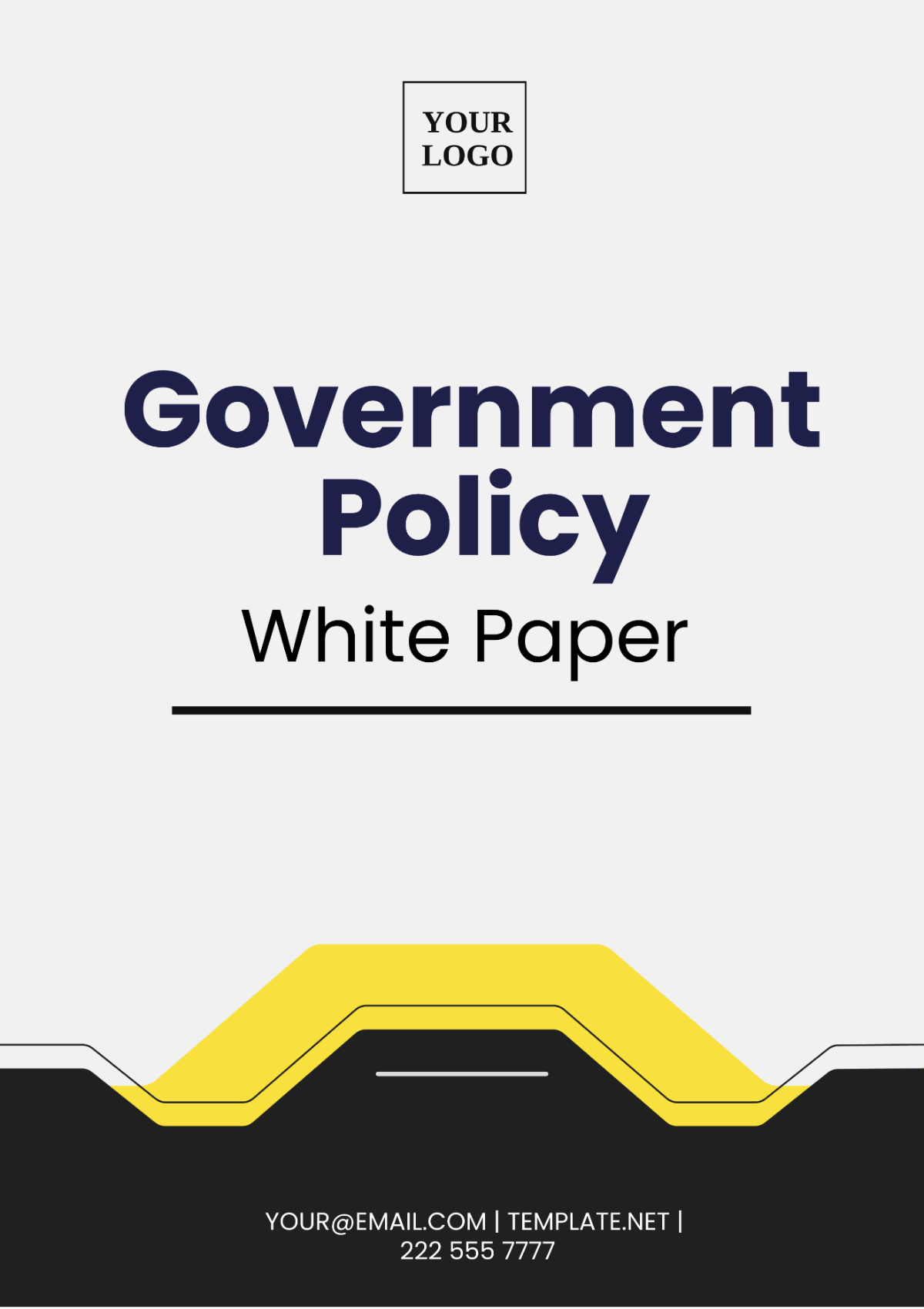Government Policy White Paper
Prepared by: | [Your Name] |
Organization: | [Your Company Name] |
Department: | [Your Department] |
Date: | [Date] |
I. Introduction

The government recognizes the need for comprehensive healthcare reform to address the challenges facing our healthcare system, including rising costs, inequities in access, and the need for quality improvement. As such, the government has proposed the Healthcare Reform Policy to overhaul the current healthcare system and ensure access to affordable, high-quality care for all citizens.
The purpose of this White Paper is to analyze the proposed Healthcare Reform Policy, assess its potential impact on stakeholders, and provide recommendations for its successful implementation.
II. Policy Overview
A. Policy Objectives
B. Policy Scope
The Healthcare Reform Policy covers all aspects of the healthcare system, including primary care, hospital services, pharmaceuticals, and long-term care. It aims to address systemic issues and transform the healthcare system into one that is equitable, efficient, and sustainable.
III. Policy Analysis
A. Stakeholder Analysis
Key stakeholders affected by the Healthcare Reform Policy include:
Government agencies responsible for healthcare regulation and financing.
Healthcare providers, including hospitals, clinics, and physicians.
Patients and their families.
Pharmaceutical companies and medical device manufacturers.
Insurance companies and other healthcare payers.
Each stakeholder group has unique interests, concerns, and roles in the policy implementation process.
B. SWOT Analysis
Strengths:
The Healthcare Reform Policy aligns with public demand for universal healthcare coverage and improved healthcare quality.
It provides an opportunity to streamline administrative processes, reduce healthcare costs, and enhance efficiency in service delivery.
Weaknesses:
Implementation may face resistance from vested interests within the healthcare industry, including insurers, pharmaceutical companies, and healthcare providers.
Achieving consensus on policy details and funding mechanisms may be challenging, given the diverse interests of stakeholders involved.
Opportunities:
The Healthcare Reform Policy presents an opportunity to address longstanding issues in the healthcare system, such as disparities in access, quality, and affordability.
It allows for innovation in care delivery models, including telehealth, preventive care, and integrated care coordination.
Threats:
Political opposition and public skepticism about government intervention in healthcare may hinder policy adoption and implementation.
Economic uncertainties and budget constraints could limit the government's ability to fund and sustain healthcare reforms over the long term.
IV. Policy Recommendations
A. Short-Term Measures
Implement pilot programs to test new care delivery models, payment reforms, and quality improvement initiatives.
Provide funding and technical assistance to support healthcare organizations in adopting electronic health records and other health information technologies.
B. Long-Term Strategies
Establish a national healthcare financing system that provides comprehensive coverage for essential healthcare services, including preventive care, chronic disease management, and mental health services.
Invest in healthcare workforce development and training programs to address workforce shortages and improve the quality of care.
V. Policy Implementation
A. Institutional Framework
The Healthcare Reform Policy will require coordination among multiple government agencies, healthcare providers, insurers, and other stakeholders.
Establishing a governance structure with clear roles and responsibilities will be essential for effective policy implementation and oversight.
B. Monitoring and Evaluation
Develop robust monitoring and evaluation mechanisms to track progress toward policy goals and assess the impact of reforms on healthcare access, quality, and costs.
Regular reporting and data transparency will facilitate accountability and inform ongoing policy adjustments as needed.
VI. Case Studies
A. Successful Policy Implementations
Case Study 1: The implementation of universal healthcare coverage in [Country Name] resulted in significant improvements in healthcare access, equity, and health outcomes for its citizens.
Case Study 2: The Affordable Care Act in the United States expanded health insurance coverage and implemented reforms to improve care coordination and quality, although challenges remain in achieving universal coverage and controlling costs.
B. Lessons Learned
VII. Policy Impact Assessment
A. Social Impact
The Healthcare Reform Policy has the potential to improve health equity and reduce disparities in access to care, particularly for underserved populations.
However, challenges such as cultural barriers, language barriers, and social determinants of health must be addressed to ensure equitable access to care for all.
B. Economic Impact
The policy's economic impact will depend on factors such as funding sources, cost containment measures, and the efficiency of healthcare delivery.
Investments in preventive care, early intervention, and population health management have the potential to yield long-term cost savings and economic benefits.
C. Environmental Impact
VIII. Conclusion

The Healthcare Reform Policy represents a significant opportunity to address longstanding challenges in the healthcare system and improve health outcomes for all citizens. By leveraging evidence-based strategies, engaging stakeholders, and fostering innovation, the government can achieve its vision of a more equitable, efficient, and sustainable healthcare system.
White Paper Templates @ Template.net
































